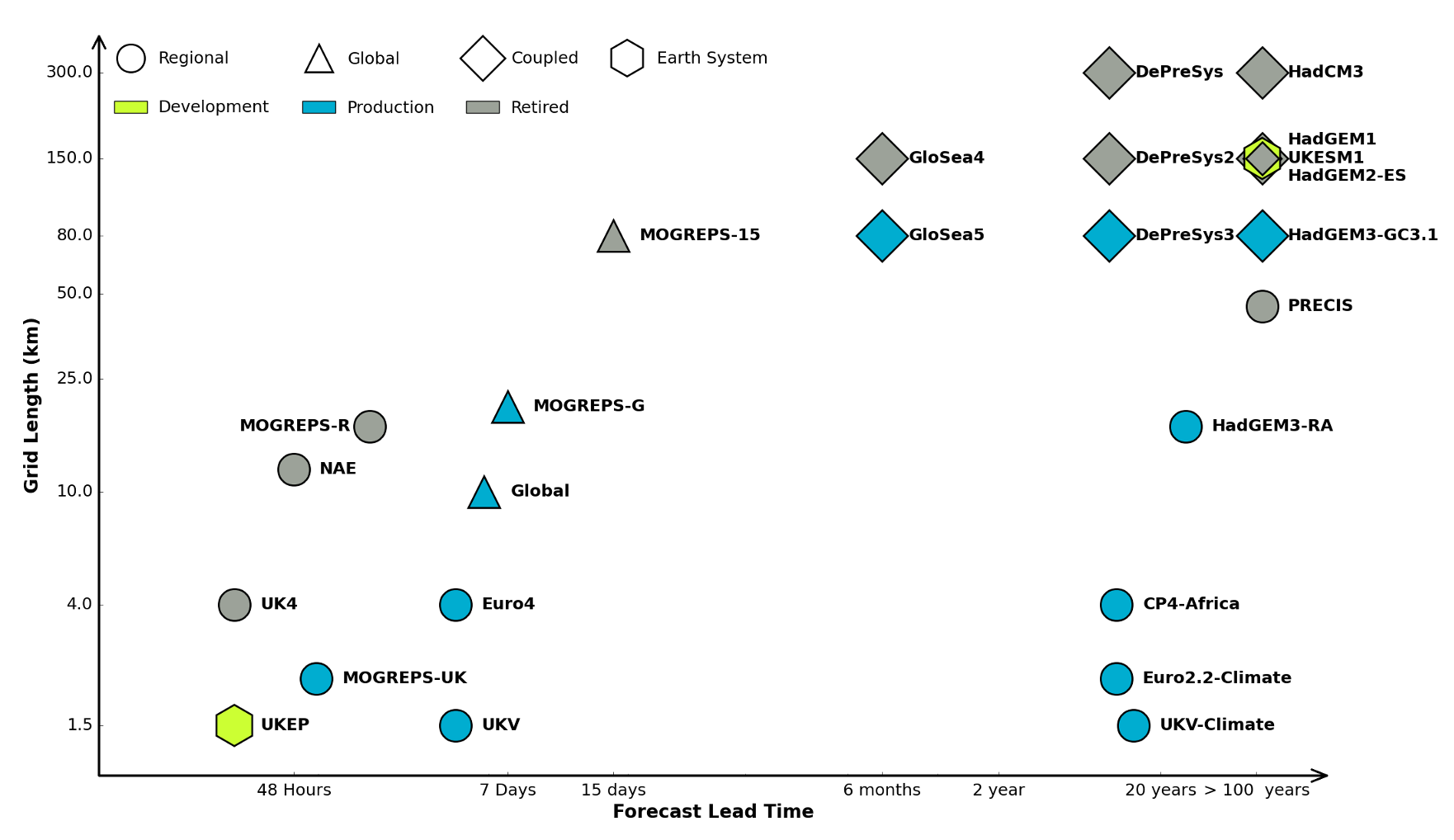Unified Model
The Unified Model (UM) is a numerical model of the atmosphere used for both weather and climate applications.
A seamless modelling approach
Seamless modelling, whereby a single model family can be used for prediction across a range of timescales, has been at the heart of the Met Office strategy for weather and climate prediction since 1990.
The Unified Model applies this seamless modelling approach, which means that the same dynamical core and, where possible, the same parameterization schemes are used across a broad range of spatial and temporal scales on a traceable frame work.
The model is suitable for numerical weather prediction (NWP), seasonal forecasting and climate modelling with forecast times ranging from a few days to hundreds of years. Furthermore, the Unified Model can be used both as a global and a regional model.
Unified Model seamless modelling hierarchy

The figure above shows an example of the Unified Model seamless modelling hierarchy and is a snapshot of configurations run at the Met Office.
Benefits of the seamless approach
Efficiency
Developing one system for multiple uses reduces development effort and allows improvements made for climate science to be applied in our weather forecasting systems, and vice-versa.
Understanding
Short-range forecasts can be used for learning about error growth and help study the performance of long term climate simulations. Likewise, studying the long-range climatology of the model helps constrain and understand the physical processes used in short-range NWP forecasts.
Robustness
Using the same model for regional and global modelling gives confidence that the driving mechanisms are consistent.
The dynamical core
The model's dynamical core solves the compressible non-hydrostatic equations of motion with semi-lagrangian advection and semi-implicit time stepping. Sub-grid scale processes such as convection, boundary layer turbulence, radiation, cloud, microphysics and orographic drag are represented by parameterizations. The model uses a grid point discretization on a latitude-longitude grid system with a rotated pole.
How can you use the Unified Model?
The Unified Model is available for use outside the Met Office through a licensing agreement aimed at meeting the needs of the user. A number of research organisations and national meteorological services use the Unified Model in collaboration with the Met Office to undertake basic atmospheric process research, produce forecasts, develop the Unified Model code and build and evaluate earth system models.
As part of the Joint Weather and Climate Research Program (JWCRP) between the Met Office and NERC, the Unified Model is also available for use on the MONSooN High Performance Computing facility to improve collaboration between scientists funded by the two organisations. MONSooN is a shared development platform which provides users with the technical knowledge as well as the ability to run experiments with standard Unified Model configurations. For more information about MONSooN visit the JWCRP page.
For access to model output contact the Met Office enquiries team.
Unified Model configurations at the Met Office
Different systems of the Unified Model are available, customized for resolution and application. The systems used at the Met Office are described in the pages linked below.


